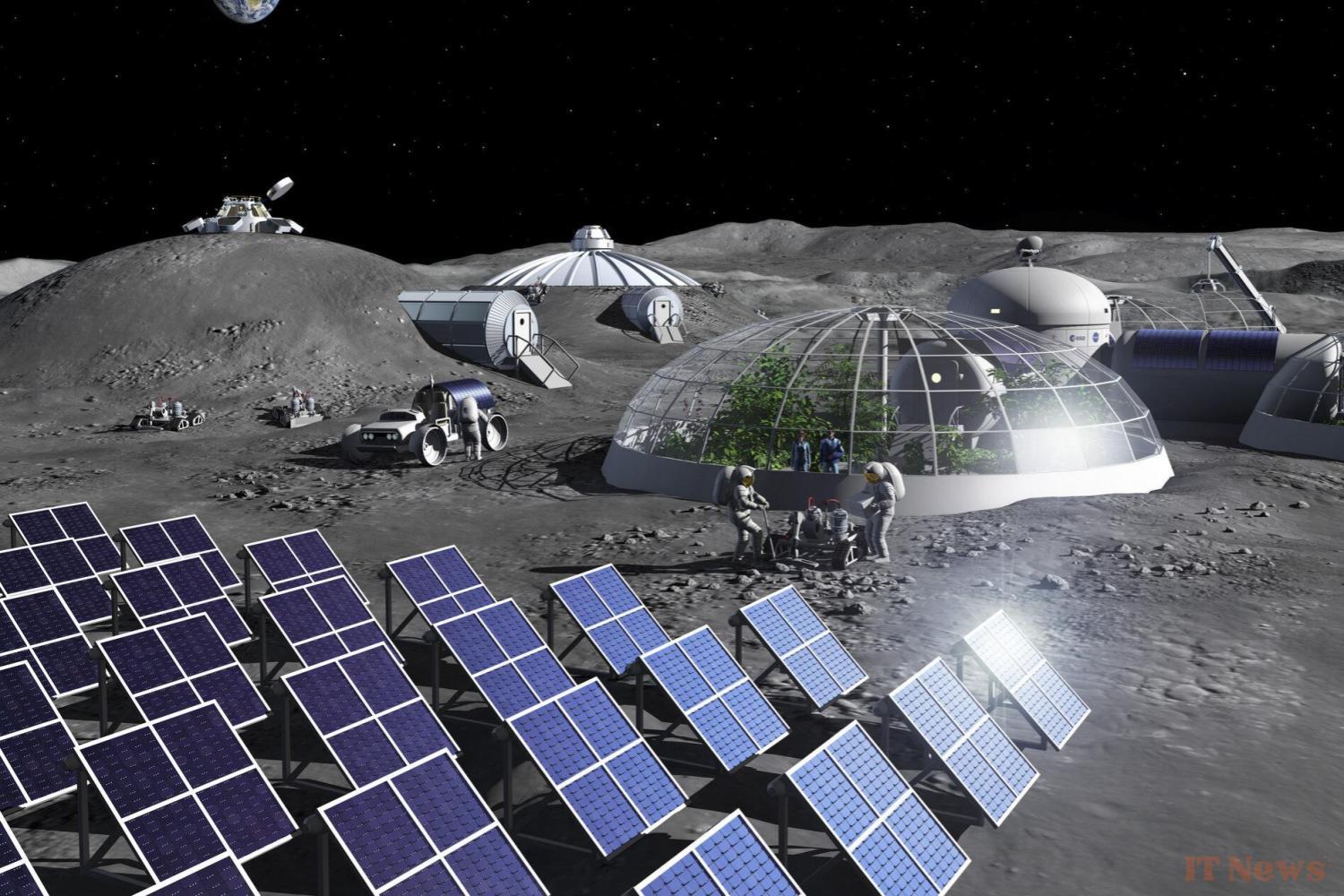Humanity has never been closer to establishing its first bases on the Moon—but there is still no consensus on the best way to power these infrastructures. Should we prioritize nuclear energy? Fuel cells? Develop laser or microwave energy transfer technologies? Not for researchers at the University of Potsdam. According to them, solar energy remains the most relevant—and this is even more true now that they have developed a technology that allows us to produce photovoltaic panels directly on our satellite.
Their idea is based on a simple observation: shipping equipment into space is extremely expensive, especially when it also has to be placed on the surface of another celestial body. Today, sending one kilogram of resources to the Moon costs around one million euros.
The challenge is therefore to produce as much equipment as possible directly on site. Many companies and institutions are already exploring this approach to produce different types of resources on the Moon, including oxygen and building materials. The authors of this new study, for their part, propose doing the same with a new generation of solar panels.
A “lunar glass” produced on site
The key point of this work is that the photovoltaic material itself, the material that allows a solar panel to convert light into electricity, represents only a tiny part of the total weight. More than 99% of the total mass of a panel resides in the support structure, but also in the transparent substrate of the photovoltaic cells.
Based on this observation, these researchers proposed producing the latter directly on the Moon from regolith, the rocky dust that covers almost the entirety of our satellite. The latter is made up largely of silica (SiO2), alumina (Al2O3) and calcium oxide (CaO) — a recipe that is relatively easy to reproduce in the laboratory. The authors therefore synthesized an artificial regolith, based on the composition of the samples brought back to Earth during the Apollo program, which they then melted in an attempt to produce a “lunar glass”.
At the end of these experiments, they were able to confirm that the regolith does indeed contain all the ingredients necessary to produce such a transparent material, which could be used to build solar panels.
And importantly, it is possible to do so without resorting to prior extraction, separation and refining processes. A point that is anything but negligible, because it means that there would not even be a need for heavy and bulky industrial equipment! Indeed, the authors' experiments strongly suggest that the regolith can be melted simply with sunlight, using a large curved mirror focused on a tank filled with dust. Of course, glass produced in this way would inevitably contain impurities that could reduce the panel's efficiency. But the practical, logistical, and economic benefits are such that this approach remains very interesting.
One kilo of cargo for 400m² of solar panels
After producing this glass locally, the researchers propose combining it with materials with a particular chemical structure, called perovskite structure. This is an emerging approach that has not yet become widespread on Earth, where silicon-based panels remain largely in the majority, but which is particularly promising in this context. Particularly because these perovskite solar cells are very light and offer a high theoretical efficiency (more than 25% in the laboratory).
But above all, they only require a very thin photovoltaic layer, a few hundred nanometers thick. According to the authors, a good strategy would therefore be to send a small quantity of perovskite-structured materials to the Moon to produce a large quantity of solar panels with minimal logistical constraints.
"These solar cells require ultrathin absorber layers of only 500 to 800 nanometers, allowing the manufacture of 400 square meter solar cells with only one kilogram of perovskite raw material brought from Earth," the authors explain.
As the first lunar bases are fast approaching, it will be interesting to follow the progress of all this work focused on in situ resource production. This will likely be a major pillar of the lunar conquest, and the different strategies employed by engineers to solve these new problems will undoubtedly be fascinating to follow.
The text of the study is available here.



0 Comments